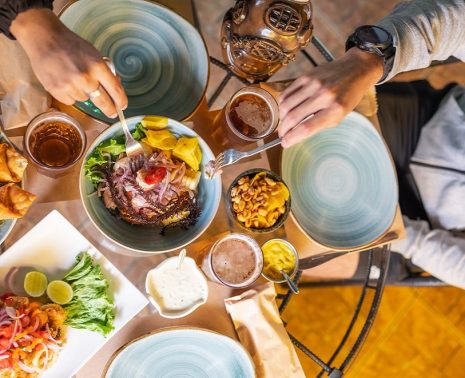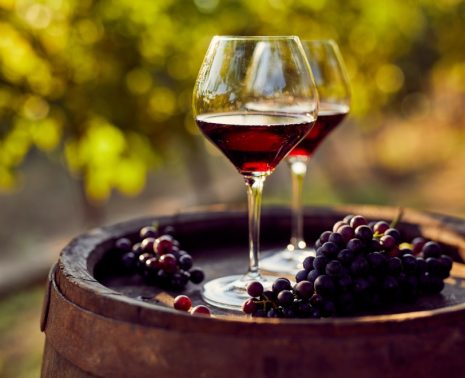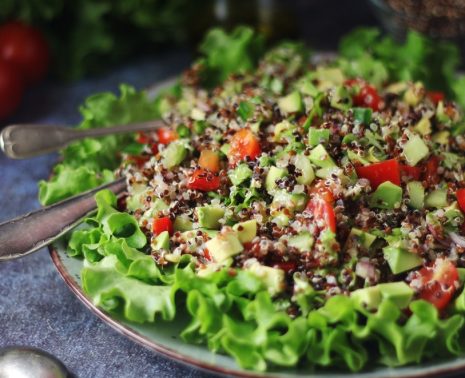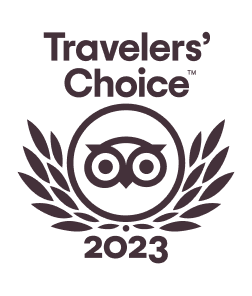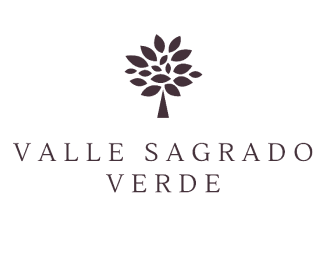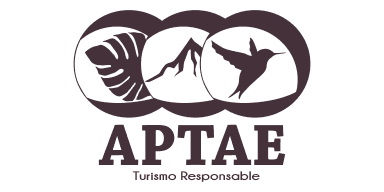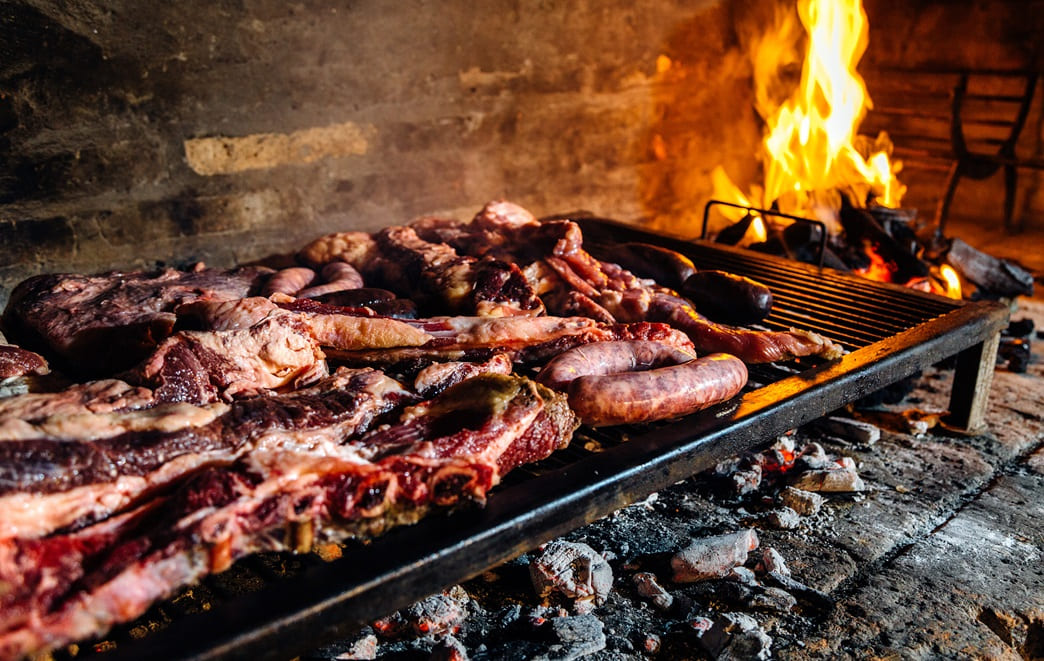
The best travel experiences appeal to the senses – seeing the mighty glaciers of Patagonia, smelling the fresh air after a rainy morning in Medellin, touching a handmade alpaca blanket in Cusco, and of course, tasting heavenly culinary creations. Food, for centuries, has been a way to express creativity, revive culture, sustain communities and tell stories – and South America, with its diverse mix of people, landscapes, history, and traditions – does just that. Whether it’s a tasting menu at a Michelin-star restaurant in Chile, or tasting a homemade barbecue or parrilla in Argentina – visitors can experience a plethora of culinary experiences in South America that give visitors an immersive experience into the ingredients, recipes, traditions, and hospitality found in the region.
Ready for a taste? Send the Kuoda team a message and get started planning your delicious foodie adventures around South America, today. Read on to learn more about which experiences are a must-do in 2023, hand-selected from our team at Kuoda.
1. Mil, Virgilio Food Lab Outside of the Incan Ruins, in Sacred Valley, Peru
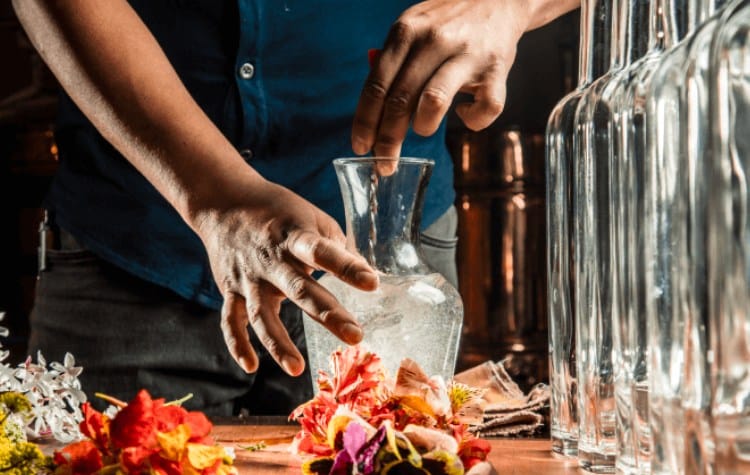
Photo Surce: milcentro.pe Preparing a drink made with ferments and distillates in Mil Centro
Virgilio Martinez is a Michelin-starred chef who has been making waves both in Peru. and internationally with restaurants in Lima, Dubai, and more. In 2019, he debuted his latest restaurant, Mil, Spanish for 1,000, the project is part restaurant, part lab, where he and his team will research and catalog native Andean ingredients through Mater Iniciativa. Perched nearly 12,000 feet above sea level, overlooking the ruins of Moray in the Sacred Valley, the restaurant may not be the easiest to get to, and you may have to acclimate to the altitude before your meal, but it’s well worth the visit.
Mil strictly sources from the ecosystem surrounding the restaurant. Anthropologists on staff foster relations with tight-knit indigenous communities and together they plant, nurture, and harvest sustainable tuber crops, maize, legumes, cacao, and Andean herbs, as well as care for a small on-site orchard. It all comes together in head chef Luis Valderrama’s innovative eight-course tasting menu, paired with infusions prepared in-house such as sun-dried cacao nib tea, which showcases strictly regional ingredients. Guests can also visit Mil’s tiny cacao lab and then enjoy its fruits for dessert.
The goal of the restaurant is to serve as a solid base for innovation and help the culinary sector in Peru go back to its roots. At Mil, an interdisciplinary group of anthropologists, biologists, nanotechnologists, and more is focused on finding ingredients unique to Peru. So far, they have discovered 55 potato varieties, 15 types of quinoa, more than 20 strains of corn, and eight versions of Chuncho cacao, native to Peru. In the future, students from the National University of Saint Anthony the Abbot in Cusco will help gather more data.
2. Asado at Rancho ’e Cuero in Mendoza, Argentina

Horseback riding in the ranches of Rancho ‘e Cuero
Rancho ‘e Cuero is a privately-owned, 7,400-acre mountain ranch located deep within the Andes Mountains outside Mendoza, Argentina. The ranch has been in the care of the Palma family for over 250 years. They welcome a limited number of guests each year, inviting them to enjoy horseback riding, fly fishing, trekking, wine tasting, and of course – enjoying homemade parrillas – a staple cuisine in Argentina. No trip to wine country is complete without a good culinary experience to pair your glass of rich Malbec with. A traditional parrilla is by far the best option for foodies who want a luxury experience in Argentine wine country.
Traditional barbecue from this region is known as “parrilla,” which can either refer to the type of restaurant or the actual grill that’s used to cook the meat. At Rancho ‘e Cuero, the chefs personally select the different cuts of meat for the Asado, ensuring they are tender and savory. The meats then get paired with fresh salads, local sides, and excellent wines from the Mendoza wine region. Each meal is meant to be homestyle, made with old family recipes and local ingredients – giving guests the opportunity to dive into Argentinian culinary culture. In addition, guests can try one of the homemade desserts that are offered, including of course the traditional Dulce de Leche.
3. Tasting Menu at Boragó, in Santiago, Chile
Awarded as one of the World’s Best 50 Restaurants, Chef Rodolfo Guzmán takes diners through the regions at Boragó, a regional Chilean restaurant with dishes such as pink tomato Mariscal served on a pumpkin, duck aged in beeswax and murra and for dessert, a sea strawberry cake and ice brûlée with plants from the Atacama Desert – the arid plateau on the Pacific Coast. Boragó is deeply rooted in Mapuche culture. Inspired by the indigenous hunter-gatherers of Southern Chile and Argentina, Guzmán strives to incorporate the autochthonous plants of the nation into the restaurant’s vast pantry. He directs over 200 people, including foraging communities and small producers all over the country, to bring seasonal and fresh goods from plantation to plate. The ingredients come from coastlines, mountain tops, or even the restaurant’s nearby orchard.
The tasting menu is an incredible experience and a great way to taste the many flavors and regions of Chile. The tasting menu has two options, six courses, or sixteen courses – to share for two, with an optional wine pairing. The tasting menu rotates seasonally, but features 100% Chilean ingredients, always.
4. Nikkei, Japanese-Peruvian Cuisine in Lima, Peru
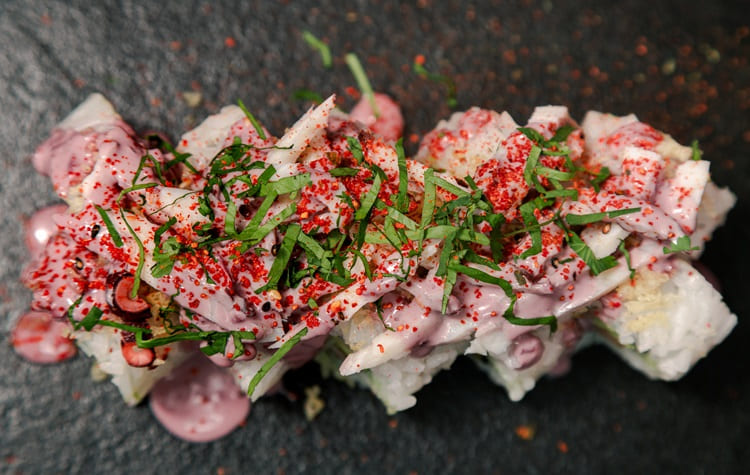
Andean shells made by Shizen Nikkei Restaurant
In recent years, the food from one fusion of cultures, in particular, has been grabbing headlines in the culinary world: Japanese-Peruvian fusion or Nikkei – a style of cooking using Peruvian ingredients, molded by Japanese techniques. Multiple chefs cite the modern preparation for ceviche as particularly indicative of the Nikkei style. Before the Japanese influence in Peru, chefs would marinate fish (traditionally, corvina) for hours, often overnight. It was Japanese immigrants who taught Peruvians to treat raw fish more simply, and merely “cook it with lemon” seconds before plating.
Nikkei restaurants are a product of Japanese-Peruvian immigration that took place in the early 20th century, with over 23,000 Japanese immigrants coming to Peru. By 1936, Japanese immigrants represented around 45% of immigrants in Peru, integrating their customs and traditions into all aspects of Peruvian culture from art to fashion to food.
One of the most notable restaurants for sampling Nikkei is Shizen Restaurante, born in 2018 under the command of three young chefs, Mayra Flores, Coco Tomita, and Renato Kanashiro. The trio doesn’t shy away from innovation, especially with their daring chirashi ceviche, which breaks any established code for either dish. The chefs top a base of sushi rice with sashimi, a mix of octopus, tuna, salmon, and market fish, then layer on chalaca, a Peruvian blend of onion, cilantro, and chile, smoked yellow chile leche de tigre, and sweet potato tempura.
Nikkei is a flavorful masterpiece that can’t be missed on your trip to Peru – let Kuoda plan your foodie trip to Peru to indulge in all that Peruvian cuisine has to offer.
5. Indigenous Food at Peumayén – Santiago, Chile
Indigenous food rarely gets its moment when it comes to highlighting the cuisine of South America, though much of the cuisine of South America is derived from indigenous ingredients, cooking techniques, or recipes. Not at Peumayén. With fare that goes beyond the expected, but honors the traditional – Peumayén Ancestral Food prides itself on serving Mapuche, or indigenous Chilean, cuisine. The cuisine is beautifully presented in a series of refined tasting menus, giving visitors the opportunity to enjoy unique ingredients and preparations of the indigenous cultures of pre-Hispanic Chile. Guests can order from their a-la-carte menu or choose from up to four different tasting menus – land, sea, vegetarian, or a combination of all three, along with an extensive cocktail list.
Dishes including amuse-bouche, a grain cracker with mushroom topped with fresh salsa, are flavorful and fresh. The stunning interiors are adorned with wooden beams, native art pieces, and an earth-tone color palette.
Hungry yet? Us too. Get in touch with us today to talk more about culinary experiences in South America, and to start crafting an itinerary perfect for you and your travel group.
8 Culinary Events and Experiences in Peru To Attend in 2024
Renowned globally for its distinctive fusion of indigenous ingredients with Spanish, African, Asian, and even ...
Read PostExploring Peruvian Wine: A Guide For Wine-Lovers Traveling to Peru
Peru is a land of many treasures, from its rich history and diverse landscapes to its culinary delights, inclu...
Read PostVegan and Vegetarian Dining in Peru: Delicious Options For Everyone
Avid travelers with a penchant for plant-based eating will be delighted to discover that vegan and vegetarian ...
Read Post

 Call
Call 







